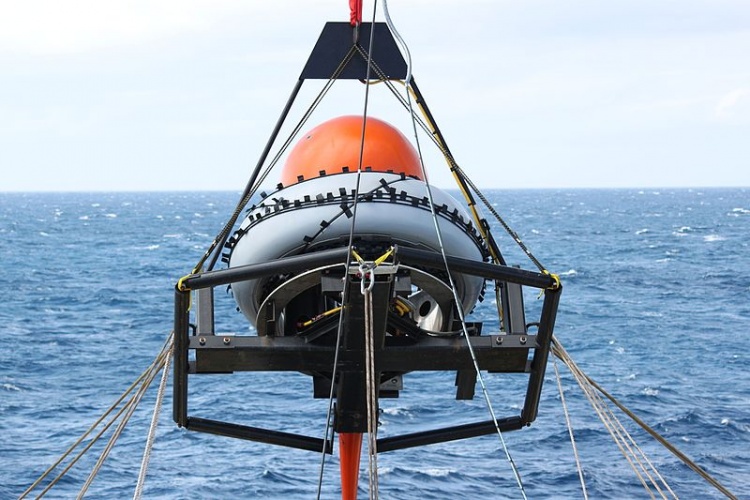
A hydrophone node is lowered into the water (Credit: CBTO via CC)
The method involves underwater microphones known as hydrophones. These can accurately measure acoustic gravity waves (AGWs) - naturally occurring sound waves that move through the deep ocean at the speed of sound. AGWs can measure tens of kilometres and travel vast distances, and are also generated when large objects hit the ocean surface, caused by the sudden change in pressure. As well as potentially tracking the entry points of meteorites and falling satellites, the technique could be used to locate stricken aircraft such as the Malaysian Airlines Flight MH370.
The Cardiff team first tested the method in the lab, dropping spheres into a water tank from various heights and measuring the results with a hydrophone. It later used existing hydrophone data from off the coast of Western Australia to accurately calculate the time and location of recent earthquakes that had occurred in the Indian Ocean. The research appears in the journal Scientific Reports.
"By using existing detectors dotted all around our oceans and listening out for signatures from these deep ocean sound waves, we've uncovered a completely novel way of locating objects impacting on the sea surface," said lead author of the study Dr Usama Kadri, from Cardiff University's School of Mathematics.
"Tracking these acoustic gravity waves opens up a huge range of possibilities, from locating falling meteorites to detecting landslides, snowslides, storm surges, tsunamis and rogue waves."
The team also analysed underwater hydrophone data from 18 March 2014, when MH370 disappeared over the South Indian Ocean. During the two-hour period the plane is believed to have crashed, the researchers found two weak signals around the suggested flight path of MH370, both resulting in a relatively large area of uncertainty where there may have been some sort of impact.
"Though we've located two points around the time of MH370's disappearance from an unknown source, we cannot say with any real certainty that these have any association with the aircraft,” said study co-author Dr Davide Crivelli, from Cardiff University's School of Engineering. “What we do know is that the hydrophones picked up remarkably weak signals at these locations and that the signals, according to our calculations, accounted for some sort of impact in the Indian Ocean.”
"All of this information has been passed onto the Australian Transport Safety Bureau and we anticipate that both now, and in the future, this new source of information could be used in conjunction with a whole of host of other data that is at the disposal of the authorities."





Project to investigate hybrid approach to titanium manufacturing
What is this a hybrid of? Superplastic forming tends to be performed slowly as otherwise the behaviour is the hot creep that typifies hot...